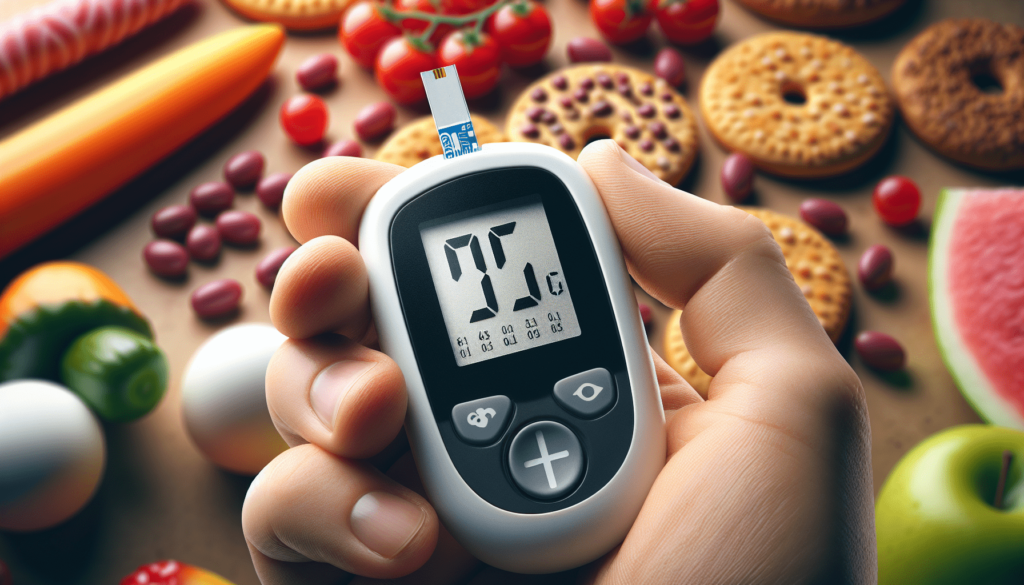Breaking Down The Science Of Glycemic Index
Have you ever wondered about the impact of certain foods on your blood sugar levels? Understanding the concept of glycemic index can help you make better choices that can positively influence your overall health and well-being. Let’s dive into the science behind glycemic index and how it can affect your body.

What is Glycemic Index?
Glycemic index (GI) is a ranking system that classifies carbohydrates based on their effect on blood glucose levels. Foods with a high GI are rapidly digested and lead to a quick spike in blood sugar, while foods with a low GI are digested more slowly, resulting in a gradual and steady increase in blood sugar levels.
Understanding the glycemic index of foods can help you make healthier choices that can aid in weight management, improve energy levels, and reduce the risk of chronic diseases such as diabetes and heart disease.
How is Glycemic Index Measured?
The glycemic index of a food is determined by feeding volunteers a fixed portion of the food containing 50 grams of digestible carbohydrate and then measuring their blood glucose response over a period of two hours. This response is then compared to the blood glucose response of consuming pure glucose, which has a GI value of 100. The GI value of a food is expressed as a percentage of the glucose response, with low GI foods having a value of 55 or less, medium GI foods having a value between 56-69, and high GI foods having a value of 70 or more.
Benefits of Low Glycemic Index Foods
Choosing low GI foods can offer a range of health benefits such as:
- Stable Blood Sugar Levels: Low GI foods release glucose slowly into the bloodstream, preventing sudden spikes and crashes in blood sugar levels.
- Weight Management: Low GI foods can help you feel full for longer periods, reducing overall calorie intake and aiding in weight loss.
- Improved Energy Levels: The steady release of glucose from low GI foods provides a consistent source of energy throughout the day.
- Reduced Risk of Chronic Diseases: Low GI diets have been linked to a lower risk of developing type 2 diabetes, heart disease, and certain types of cancer.
Examples of Low, Medium, and High Glycemic Index Foods
| Low GI Foods | Medium GI Foods | High GI Foods |
|---|---|---|
| – Quinoa | – White Rice | – White Bread |
| – Beans | – Oatmeal | – Corn Flakes |
| – Nuts | – Brown Rice | – Instant Rice |
| – Sweet Potatoes | – Whole Wheat Bread | – Watermelon |
| – Lentils | – Popcorn | – Pineapple |
Choosing a variety of low and medium GI foods in your diet can help maintain stable blood sugar levels and provide sustained energy throughout the day.

Glycemic Load vs. Glycemic Index
While glycemic index measures how quickly a carbohydrate-containing food raises blood sugar levels, glycemic load takes portion size into account. Glycemic load is calculated by multiplying the glycemic index value of a food by the amount of carbohydrates in a serving and dividing by 100.
While glycemic load provides a more accurate picture of how a specific food will affect blood sugar levels, it is still important to consider both glycemic index and glycemic load when making dietary choices.
Factors Affecting Glycemic Index
Several factors can influence the glycemic index of a food, including:
- Processing: Highly processed foods often have a higher glycemic index due to the removal of fiber and other nutrients that slow down digestion.
- Cooking Method: The way a food is cooked can affect its glycemic index. For example, overcooking pasta can increase its GI value.
- Ripeness: Ripe fruits tend to have a higher glycemic index compared to unripe fruits.
- Fiber Content: Foods high in fiber, such as whole grains and vegetables, generally have a lower glycemic index.
How to Incorporate Low GI Foods Into Your Diet
Here are some simple tips to help you incorporate more low GI foods into your diet:
- Choose Whole Grains: Opt for whole grains such as brown rice, quinoa, and barley instead of refined grains like white bread and pasta.
- Add Fiber: Include plenty of fruits, vegetables, legumes, and nuts in your meals to increase fiber intake and lower the glycemic index of your meals.
- Balance Your Plate: Aim to fill half your plate with non-starchy vegetables, one-quarter with lean protein, and one-quarter with whole grains or starchy vegetables for a balanced and low GI meal.
- Snack Smart: Choose snacks that combine protein, healthy fats, and fiber to help keep blood sugar levels stable between meals.
By making small changes to your diet and incorporating more low GI foods, you can improve your overall health and well-being while enjoying a varied and tasty diet.
Conclusion
Understanding the science behind glycemic index can empower you to make informed choices that can positively impact your health. By incorporating more low GI foods into your diet and balancing your meals, you can stabilize blood sugar levels, improve energy levels, and reduce the risk of chronic diseases. Next time you’re planning your meals, keep the glycemic index in mind and make choices that support your overall well-being.

